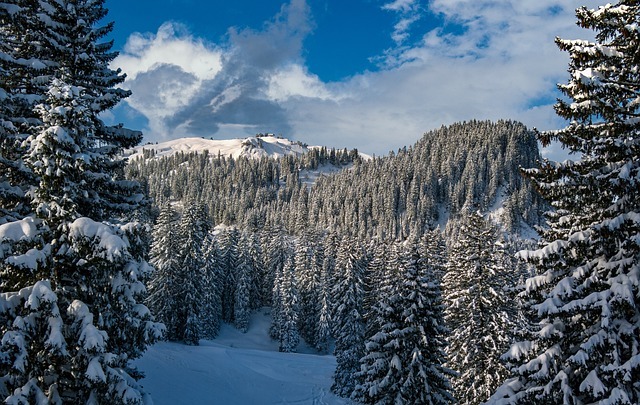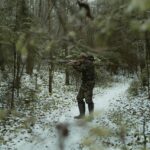Forested regions, with their lush green canopies and diverse ecosystems, offer a breathtaking environment for exploration. However, beneath the beauty lies a myriad of challenges that anyone traversing these areas must face. In this article, we’ll delve into the obstacles faced when navigating forested regions and explore effective solutions to ensure a safe and enjoyable journey.
Understanding the Terrain
Navigating through dense forests requires a keen understanding of the terrain. The forest floor can be uneven, covered with fallen branches and obscured by thick underbrush. To overcome this challenge, hikers and adventurers need to be well-equipped with the right gear and knowledge.
Choosing the Right Footwear
Wearing sturdy, slip-resistant footwear is crucial when navigating through forested areas. [Durable hiking boots] provide ankle support and protect against uneven surfaces, reducing the risk of injuries. Opt for boots with grippy soles to ensure stability on slippery or muddy terrain.
1. Terrain-Specific Selection
Tailor your footwear choice to the specific terrain you’ll be traversing. Different forests pose unique challenges, and selecting boots designed for the specific environment ensures optimal performance and comfort.
2. Prioritize Comfort for the Long Haul
Comfort is paramount when exploring forests. Choose footwear with ample cushioning and support to reduce fatigue during extended hikes. Remember, a comfortable foot is a happy foot, especially on lengthy journeys.
3. Waterproof Technology
Forests can be unpredictable, with sudden rain or damp conditions. Opt for boots featuring waterproof technology to keep your feet dry. This not only enhances comfort but also prevents potential health issues associated with wet feet.
4. Consider the Season
Seasonal variations impact the forest environment. Choose footwear that suits the season – breathable options for summer to prevent overheating and insulated, waterproof boots for winter adventures.
5. Ankle Support Matters
Uneven terrain and hidden obstacles make ankle support crucial. High-cut boots provide additional ankle stability, reducing the risk of twists and sprains. This is particularly important when navigating through dense undergrowth.
6. Traction for Slippery Surfaces
Forest floors can be slippery, especially after rain. Look for boots with advanced traction features, such as deep lugs and slip-resistant soles. This ensures a secure grip on muddy or wet surfaces, enhancing your overall stability.
7. Proper Sizing and Fit
Ill-fitting footwear can turn a forest expedition into a painful ordeal. Prioritize sizing and fit – your boots should be snug enough to provide support but with ample room to prevent blisters or discomfort, especially on downhill slopes.
8. Weight and Flexibility
Find a balance between weight and flexibility. Lightweight boots offer agility, while maintaining flexibility is essential for natural movement. Consider your walking style and the demands of the forest environment when choosing the right balance.
9. Ventilation for Breathability
Forest exploration often involves physical exertion. Opt for boots with proper ventilation to keep your feet cool and prevent excessive sweating. Breathable materials contribute to a comfortable and enjoyable hiking experience.
10. Durability as an Investment
View your forest footwear as a long-term investment. Investing in durable boots ensures they withstand the challenges of the forest environment and provide reliable performance over numerous expeditions. Read reviews and seek recommendations to make an informed decision based on real-world experiences.
Utilizing Navigation Tools
In dense forests, traditional navigation methods may prove challenging. [GPS devices] and [compasses] become invaluable tools, helping adventurers stay on course and avoid getting disoriented. Additionally, mobile apps with offline maps can provide real-time location tracking even in areas with limited connectivity.
Dealing with Wildlife Encounters
Forested regions are home to a diverse range of wildlife. While these encounters can be exhilarating, they also pose potential risks. Understanding how to coexist with wildlife is essential for a safe journey.
Practicing Wildlife Safety
Educate yourself on the specific wildlife in the area you’re exploring. Carry [bear spray] in regions where bears are prevalent, and make noise to alert animals of your presence. Keeping a respectful distance and avoiding sudden movements can prevent accidental wildlife confrontations.
Proper Food Storage
To avoid attracting wildlife to your campsite, practice proper food storage. [Bear canisters] or [hanging food bags] are effective ways to keep your provisions safe from curious animals, preventing them from associating humans with a potential food source.
Weathering the Elements
Forested regions are subject to unpredictable weather patterns. Being prepared for sudden changes in weather is vital for a safe and comfortable journey.
Pack Weather-Resistant Gear
Pack a waterproof jacket, rain cover for backpacks, and quick-drying clothes to stay dry during unexpected rain showers. Additionally, having a compact [weather radio] can provide real-time updates on changing weather conditions, allowing you to make informed decisions on your route.
Building Shelter Skills
In case of unforeseen circumstances, knowing how to construct a makeshift shelter can be a lifesaving skill. Basic tarp setups and knowledge of natural shelter options can provide protection from the elements until the weather improves or help arrives.
Addressing Navigation Challenges
Forested regions can be disorienting, with dense vegetation often obstructing clear sightlines. Navigating effectively requires overcoming these challenges.
Trail Marking Techniques
Use [colored trail markers] or ribbons to mark your path, especially in areas where the trail may be indistinct. This simple technique can prevent you from getting lost and make it easier to retrace your steps.
Developing Map Reading Skills
Enhance your map reading skills to navigate without relying solely on electronic devices. Familiarize yourself with topographic maps and understand contour lines, helping you anticipate changes in elevation and terrain.
Conclusion
Navigating forested regions presents challenges that, with proper preparation and knowledge, can be overcome. From understanding the terrain to coexisting with wildlife and weathering the elements, embracing these challenges adds a layer of excitement to your adventure. So, equip yourself, stay informed, and get ready to explore the enchanting world that forested regions have to offer. Happy trails!







